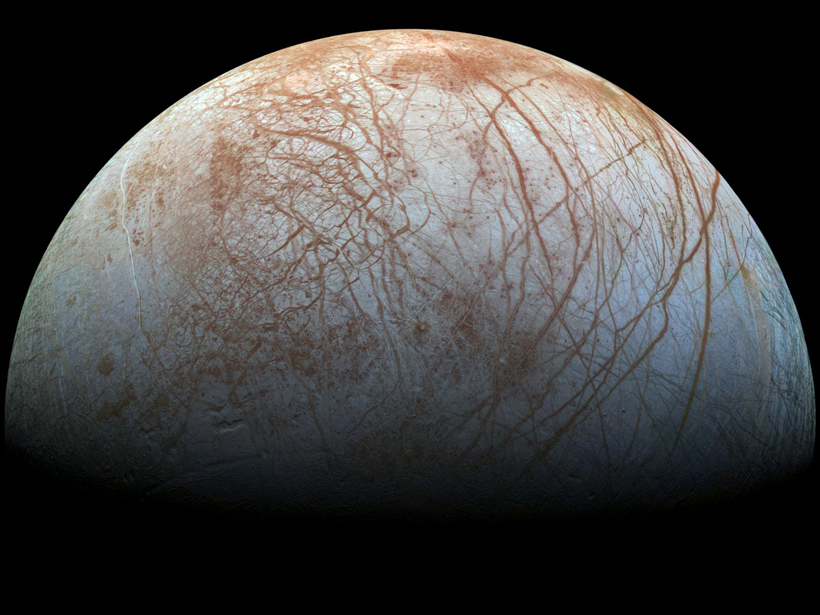A new study puts the latest version of a venerable model of Earth's ionosphere to the test, with some unexpected results.
Mark Zastrow
Eos Freelance Writer
Mysterious "Necklace Echoes" in the Sky Explained
Scientists studying a 50–year–old mystery in the Earth's ionosphere have come up with their best explanation of it yet.
Mysterious Heavy Ion Beams Above Mars Explained
NASA's latest mission to Mars has uncovered the origins of fast-moving streams of particles high above the planet, flowing against the solar wind.
Satellite Shows Earth's Magnetic Field Bent During a Solar Storm
When solar storms strike, they weaken Earth's defenses against harmful radiation. New satellite measurements reveal just how much.
Hubble Gazes at Europa's Aurora
Scientists get their best glimpse yet of the shimmering phenomena on one of Jupiter's most intriguing moons.
Moored Ocean Buoy Tracks Marine Carbon Cycle Variations
Years of data from a North Pacific ocean station show that the ocean's ability to pull carbon out of the atmosphere is controlled by biological and physical processes that change between seasons.
Solar Storms Are More Predictable Than Hurricanes
An encouraging new study finds that solar storms don't propagate chaotically like hurricanes—their arrivals are more predictable, which should make it easier for our planet to prepare for them.
The Unique Radar Signature of Rain Falling on Water
If rain falls on an ocean and nobody's there to see it, how can we determine its effect on the Earth's climate? A new study shows us how space-based radar could help.
New Space Weather Forecast Technique Fails to Improve Forecasts
For years, scientists have proposed upgrading the National Oceanic and Atmospheric Administration's solar storm forecasts to account for their tilt as they streak toward Earth. But does it help?
Magnetic Field Pulsations and Aurora Tightly Linked
Mysterious plasma waves from space are generating displays of aurora near Earth's poles.






